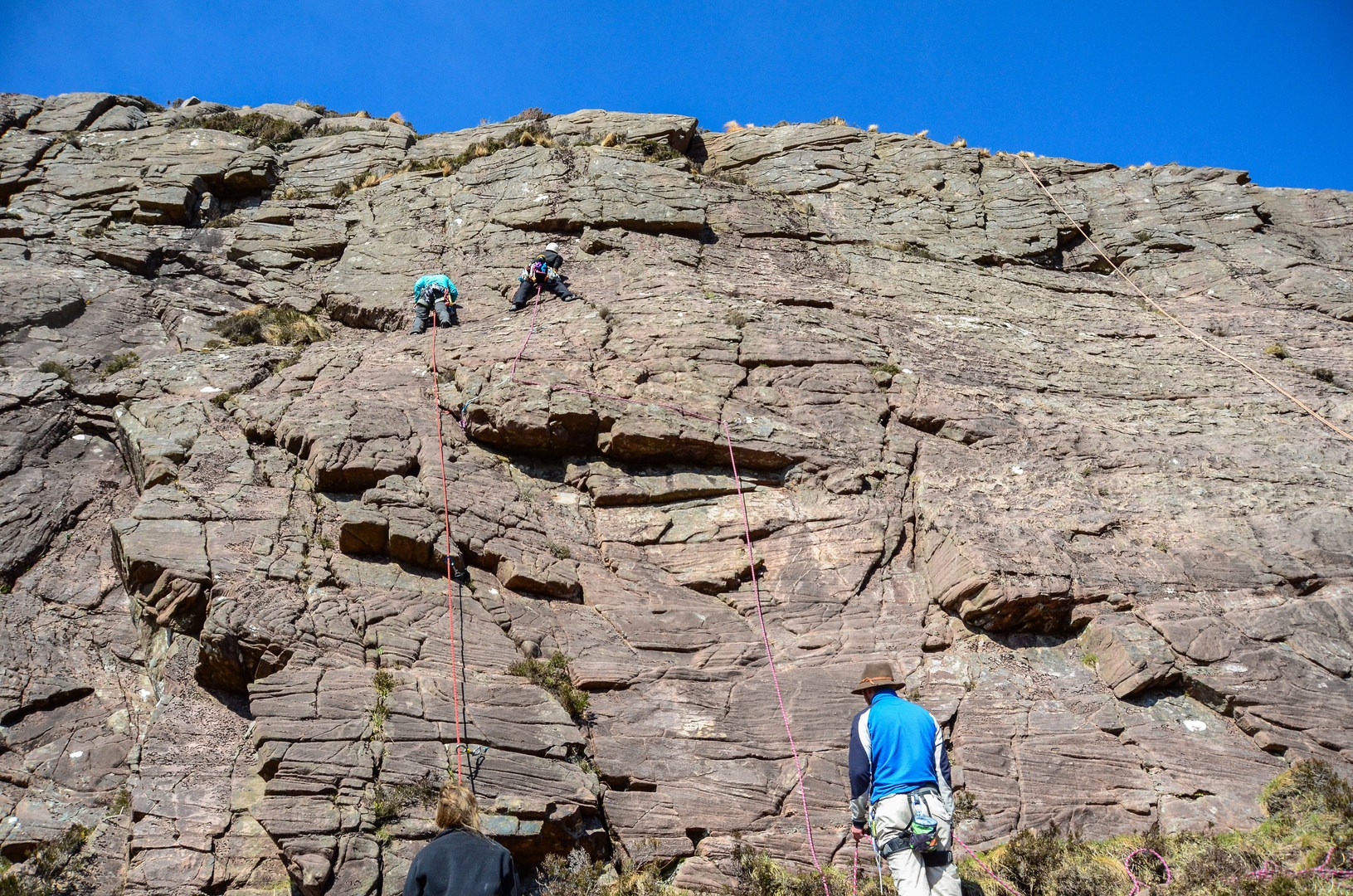You are here
Seana Mheallan is a small hill, not even big enough to be a "Donald," let alone a "Munro." But despite it's humble stature, Seana Mheallan rises several hundred meters above the centre of Torridon valley, the heartland of the famed Torridon sandstone. This incredibly dense, well-cracked and featured rock type is one of the world's best trad climbing rocks. It possesses all of the grit of gritstone, but with ample protection thanks to its fissures and cracks. It's so good that many routes can be climbed with ample protection using only a set of nuts. It's a marvel indeed, and a glorious way to experience the unique world that is British trad climbing.
Of course, the views don't hurt either. The crag, perched up in the hills, makes for remarkable vistas you get in few other spots. However, this does mean that you can get the worst of the weather. In winter, the low altitude does make for rare routes to form up, but when they do it's worth a visit, especially for newer climbers looking to top rope some winter climbs.
Approach
Park at the gravel turn off 1 kilometer east of Torridon. The trail is faint, but follow it down to the river. There is a bridge now, though in the past access over solid rocks has proven reliable. The trail follows the large central gully upward. It's a steep, not particularly well-defined trail.
From the road Glac Dhorc crag is the last cliff face on the horizon, slightly to the left of the main gully. Make note of the rocks to use as a landmark to turn. For the western crags about halfway up, you can follow a ledge system heading right. This gains a wide plateau with small tarns and several huge boulders. If you fancy camping, this is an excellent spot, with the boulders making good wind blocks. Also, above the valley, there are far fewer ticks. The western crag is on the southwestern side of this plateau.
Generally, it's worth starting the day at the western crags as they see more sun, then transition over to Glac Dhorc. Both areas have a wide assortment of routes, though intermediate routes are more prevalent. There are no anchors here; that runs counter to British climbing ethics. Be prepared for some creative anchor building.
A Standard Rack:
- Cams: 0.4 to 3 inches (BD 0.1 -3).
- Full set of nuts. Consider a extra half-set of nuts. Hexes are beloved and useful here too
- Two 120-centimeter slings, two 240-centimeter slings
- Six alpine draws, six 60-centimeter slings
Typically, Brits climb on half ropes because the gear placements wander a lot. The versatility, shorter falls, and redundancy of half ropes make a big difference. It's also worth noting that traditionalists in the UK often look down upon cams due to the privilege of superb rock like this. Prepare to be laughed at (mostly in jealousy) if you turn up with a classic Indian Creek rack.
Camping
Scotland has very liberal walker's rights, and camping is a privilege to take advantage of anywhere you are not disturbing people or livestock. As ever, this privilege is contingent on the user's responsibility as a steward to maintain and keep the lands they use in the same state for the next visitor.
Further Resources
- UKClimbing.com logbook has this crag well covered
- Scottish Rock: North, Volume 2, by Gary Latter. Some of its pages are available to preview on Google Books, including those on Torridon. Before you use this, ask yourself: How much am I going to use this book and what's fair? Guidebooks are expensive to produce, so if you're going to use the materials without paying, consider a way to give back that is proportionate. The Mountaineering Council of Scotland is a great organization that helps maintain trails and crags and would be a great place to send a few quid in thanks.
Logistics + Planning
Current Weather: Powered by Dark Sky





























Comments
Sign In and share them.